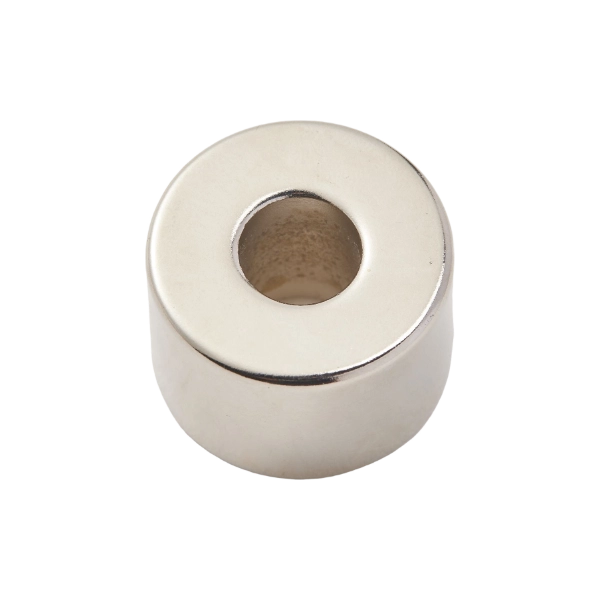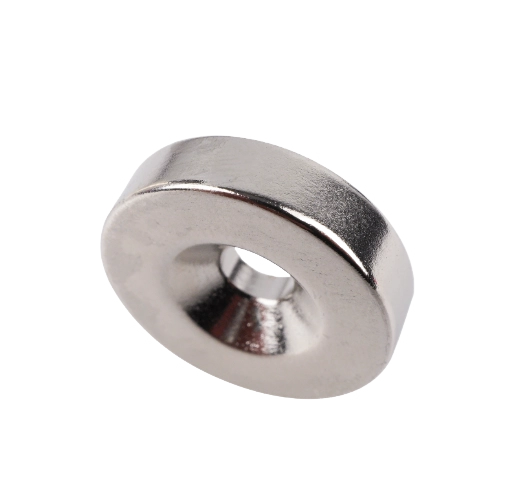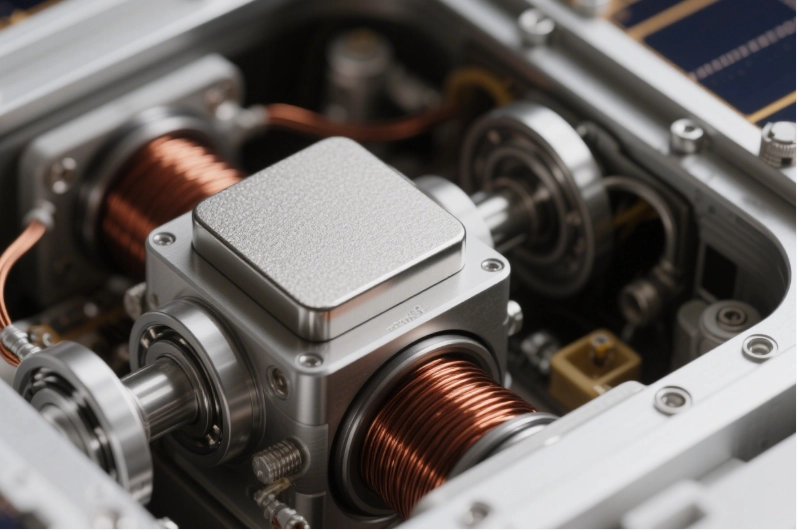Home > News > Trade news > What Is a Bonded NdFeB Magnet and How Does It Differ from a Sintered NdFeB Magnet?
What Is a Bonded NdFeB Magnet and How Does It Differ from a Sintered NdFeB Magnet?
In the field of magnetic materials, NdFeB magnets (Neodymium-Iron-Boron magnets) are widely recognized for their exceptional magnetic strength and versatility. They are the strongest permanent magnets available today and are used in a wide range of industries, from automotive and electronics to renewable energy and medical devices. Within this category, there are two main types of NdFeB magnets: bonded NdFeB magnets and sintered NdFeB magnets. While both are based on the same magnetic alloy system, their manufacturing methods, physical properties, and applications differ significantly.


What Is a Bonded NdFeB Magnet?
A bonded NdFeB magnet is made by combining NdFeB magnetic powder with a polymer binder such as epoxy resin or nylon. The mixture is then compressed or injection molded into a desired shape and cured to form a solid magnetic component. Unlike sintered magnets, bonded magnets do not undergo a high-temperature sintering process. This manufacturing approach allows for greater flexibility in design, enabling the creation of complex shapes and tight dimensional tolerances.
The bonded form typically contains around 60–80% magnetic material by volume, with the rest consisting of the binder. Although the magnetic strength of bonded NdFeB is lower than that of sintered NdFeB, it offers superior mechanical properties, high precision, and excellent corrosion resistance due to the protective binder matrix.
Key Features of Bonded NdFeB Magnets
High Dimensional Accuracy
Bonded NdFeB magnets can be molded into various intricate shapes with minimal machining. This makes them ideal for precision assemblies in motors, sensors, and encoders.Isotropic Magnetic Properties
Unlike sintered NdFeB magnets, which are anisotropic (magnetized in one direction), bonded NdFeB magnets are typically isotropic, meaning they can be magnetized in any direction. This provides greater design flexibility for multi-pole magnetic components.Excellent Corrosion Resistance
The polymer binder encapsulates the magnetic particles, effectively protecting them from oxidation and corrosion. Therefore, most bonded magnets do not require additional surface coatings.Ease of Assembly
Bonded magnets can be integrated directly with other materials during the molding process, reducing the need for separate mechanical assembly steps. This simplifies production and lowers costs for mass manufacturing.Stable Performance at Moderate Temperatures
Bonded NdFeB magnets perform reliably at moderate working temperatures (up to about 150°C), making them suitable for many consumer and industrial electronic applications.
How Is a Bonded NdFeB Magnet Produced?
The production process of bonded NdFeB magnets generally involves the following steps:
Preparation of NdFeB Powder – The NdFeB alloy is pulverized into fine magnetic powder, typically less than 100 microns in size.
Mixing with Binder – The powder is uniformly mixed with a polymer binder such as epoxy, PPS, or nylon.
Molding Process – Depending on the product type, the mixture can be compressed or injection molded into the desired shape.
Curing and Finishing – The molded magnets are cured at controlled temperatures and may undergo finishing steps such as surface polishing or magnetization.
This method allows manufacturers like Mishma Industry (Shanghai) Co., Ltd. to produce magnets with consistent quality, smooth surfaces, and highly accurate geometries—perfect for precision-driven industries.
Comparison: Bonded NdFeB vs. Sintered NdFeB
| Property | Bonded NdFeB Magnet | Sintered NdFeB Magnet |
|---|---|---|
| Manufacturing Method | Compression or injection molding with polymer binder | Powder metallurgy with high-temperature sintering |
| Magnetic Strength | Moderate (up to 12 MGOe) | Very high (up to 52 MGOe or more) |
| Density | Lower (contains non-magnetic binder) | Higher (nearly full metallic density) |
| Corrosion Resistance | Excellent (binder protection) | Requires coating (nickel, zinc, epoxy, etc.) |
| Shape Complexity | Can form complex shapes easily | Limited; machining required after sintering |
| Temperature Resistance | Moderate (≤150°C) | High (up to 200–250°C) |
| Magnetic Orientation | Usually isotropic | Anisotropic (stronger in one direction) |
| Cost and Production Efficiency | Cost-effective for high-precision or complex parts | Cost-effective for high-performance bulk magnets |
Applications of Bonded NdFeB Magnets
Bonded NdFeB magnets are widely used in applications where precise shapes, smooth surfaces, or integrated components are required. Common fields include:
Micro motors and stepper motors in office automation equipment
Rotors and sensors in automotive systems
Magnetic encoders and actuators
Home appliances, such as fans and vacuum cleaners
Consumer electronics like printers, audio systems, and mobile devices
Because of their high stability and excellent corrosion protection, bonded magnets are also ideal for environments with fluctuating humidity or mild chemical exposure.
Why Choose Mishma Industry (Shanghai) Co., Ltd.?
As a professional magnetic materials manufacturer, Mishma Industry (Shanghai) Co., Ltd. specializes in the development and production of both bonded and sintered NdFeB magnets. With advanced molding technology and strict quality control, the company ensures that each product meets international standards of precision, performance, and reliability.
Mishma provides customized magnetic solutions, from material selection and magnetic design to final assembly, catering to diverse industrial requirements. Whether your application demands the compact versatility of bonded NdFeB magnets or the exceptional magnetic power of sintered NdFeB, Mishma Industry offers the right solution for your needs.
In summary, bonded NdFeB magnets and sintered NdFeB magnets serve different roles within the same magnetic family. Bonded magnets excel in design flexibility, corrosion resistance, and dimensional accuracy, while sintered magnets dominate in magnetic strength and high-temperature stability. Understanding their distinct characteristics helps engineers and product designers choose the most suitable material for their application.
Mishma Industry (Shanghai) Co., Ltd. continues to innovate in magnetic material technology, providing high-quality NdFeB solutions that power today’s advanced industries and tomorrow’s innovations.



